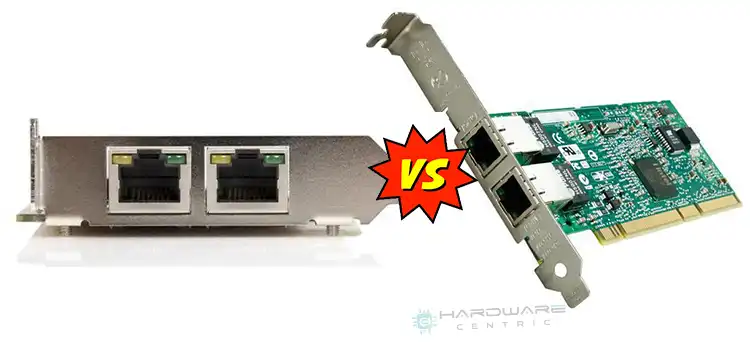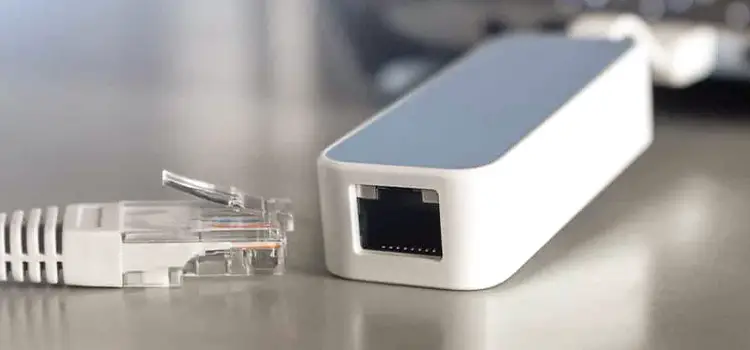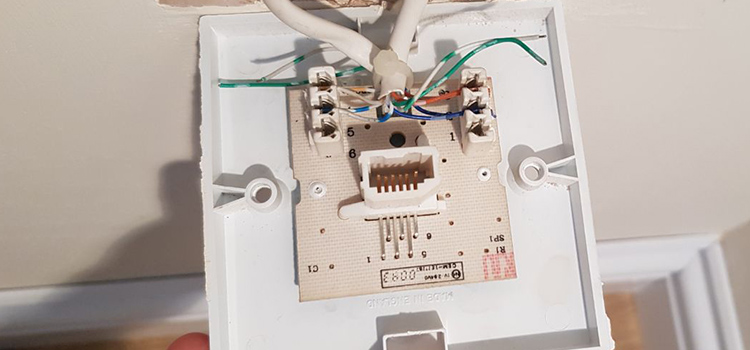Onboard LAN Network or Intel Pro 10/100 | What Are the Differences
The onboard LAN network works almost just as fine as Intel Pro 10/100/1000 network. An onboard LAN port is an integrated combination of ethernet and LAN controller that’s installed with the motherboard and directly connected to the PCI bus.
Whereas the Intel pro 10/100/1000 network card is just another ethernet port. There’s no significant upgrade if you switch from an onboard LAN network to the Intel pro 10/100/1000 as the latency difference is almost negligible.

Difference of Features | LAN Network vs Intel Pro
The onboard LAN network works almost just as fine as Intel Pro 10/100/1000 network. In general, onboard LAN networks are a cost-effective option for basic LAN connectivity and are included with most motherboards.
The Intel Pro 10/100 is a more advanced, higher-performance option for those who need more advanced networking features, such as VLANs, teaming, and wake-on-LAN. The choice between these two options will depend on the specific requirements and budget of your network setup.
| Feature | Onboard LAN Network | Intel Pro 10/100 |
| Purpose | Basic LAN connectivity | High-speed LAN connectivity |
| Speed | 10/100 Mbps | 10/100 Mbps |
| Network Architecture | Integrated on motherboard | Add-on network adapter card |
| Cost | Included with the motherboard, lower cost | Additional cost, higher performance |
| Features | Basic network functionality | Advanced network functionality, including support for VLANs, teaming, and wake-on-LAN |
What Is an Onboard Lan Network

An onboard LAN port is an ethernet and LAN controller that’s integrated with your motherboard and connected directly to the PCI bus. It is a specialized chipset installed in the motherboard designed to handle networking responsibilities for the computer, such as home networking and Internet connectivity.
What Is a 10/100/1000 Gigabit Network Onboard
Ethernet network interface Card (NIC) or Ethernet network switch, or a router’s Ethernet interface is referred to as 10/100/1000 if it can transmit data at all Ethernet (10 Mbps), FastEthernet (100 Mbps), Gigabit Ethernet (1000 Mbps speeds).
What is a 10/100 Ethernet Card
A 10/100 ethernet card refers to the standard for high-speed network connections using cable connection that supports both 10 Mbps (megabits per second) and 100 Mbps data transmission rates. Ethernet is the most common networking standard for LAN communications.
Is a Dedicated Network Card Better Than an Integrated?
For latency issues, there isn’t a noticeable difference in latency between onboard and dedicated NIC. Both of these use the PCI-express. The most dedicated network card is as good as integrated ones. However, it depends on the intel NIC you as some of their high-end network chipsets on servers are a lot better than the ones integrated on motherboards.
NICs use the DMA to transmit data to the main memory, so use the memory with the highest frequency. Even though the newer version of PCI-e is better as the CPU frequency is more important than the number of cores.
The dedicated NIC is connected to the internal PCI-e controller in the CPU. Onboard integrated NIC can be connected to the chipset-integrated controller, not directly to the CPU. But the difference in latencies of transmitting data from NIC to memory is almost absent.
To Conclude
You have to use the same ASIC model with the same firmware to eliminate external factors to compare onboard vs PCIe NIC. However, the newer version of PCI-e is better in terms of speed for less time to transmit data.
Subscribe to our newsletter
& plug into
the world of PC Hardwares

![[Fix] Realtek USB Wireless Lan Utility Not Working (100% Working)](https://www.hardwarecentric.com/wp-content/uploads/2023/01/Realtek-USB-Wireless-Lan-Utility-Not-Working.jpg)
![[5 Fixes] WLAN Extensibility Module has Failed to Start](https://www.hardwarecentric.com/wp-content/uploads/2022/09/WLAN-Extensibility-Module-has-Failed-to-Start.jpg)

![[Fix] Ethernet Not Working But WIFI Is on (100% working)](https://www.hardwarecentric.com/wp-content/uploads/2021/10/Ethernet-Not-Working-but-wifi-is-on.jpg)

